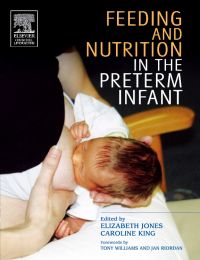A practical handbook for healthcare professionals that covers all aspects of pre-term nutrition, using evidence-based information to promote safe and effective practice. Readers will discover problem-solving strategies, interventions, and information on meeting the nutritional requirements of pre-term infants.
Key Features
- Easily accessible information on all aspects of pre-term and neonatal nutrition
- Includes the latest research-based information on mammary physiology and the dynamics of milk expression
- Discusses the nutritional requirements of the pre-term breastfed infant - and how to succeed in meeting these needs
- Provides effective interventions to prevent pre-term breastfeeding failures
- Problem-solving strategies ensure a smooth transition from nasogastric to breastfeeding
Author Information
By Elizabeth A. Jones, MPhil, Breastfeeding Specialist (Neonatal Unit), North Staffordshire Hospital (NHS) Trust, UK and Caroline King, BSc(Hons), SRD, Specialist Neonatal and Paediatric Dietitian Department of Nutrition & Dietetics, Imperial College Healthcare NHS Trust, Hammersmith Hospital, London, UK
Chapter 1. Benefits of Human Milk for the Preterm Baby
Chapter 2. Nutritional Requirements
Chapter 3. Ensuring Nutritional Adequacy of Human Milk Fed Preterm Babies
Chapter 4. Mammary Anatomy and Physiology
Chapter 5. Milk Expression
Chapter 6. Milk Banking
Chapter 7. Enteral Feeding
Chapter 8. Monitoring Growth and Outcome
Chapter 9. Feeding Development
Chapter 10. Transition from Tube to Breast
Chapter 11. Feeding Problems
Chapter 12. Benchmarking, Standards, Audit and Education
Glossary
Resources
Index
"The book concentrates on the important area of breast feeding of the preterm and the use of expressed milk when breast feeding is not possible. It this respect the book fulfils its remit very well." S B Ainworth, Disease in Childhood, (2006; 91; 374-375)
'A well-designed resource for all professionals involved in the care of the neonate... While firmly recommending this book to all neonatal units and transitional wards, I would also suggest that those supporting mothers nursing term infants would find this book a worthwhile and informative read.'
Royal College of Midwives Journal 'Midwives'(September 2006, Vol. 9, No. 9)


